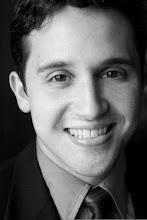This article first appeared in TheCountertenorVoice.com on April 12th, 2011. Read the full article here
Is countertenor technique different from standard classical vocal technique? Should a countertenor train like a male or female voice, and what pedagogical approach and conceptual model best elicits a healthy countertenor sound? Is a countertenor merely the intersection of gender and tessitura, or is there something specific to the technical approach and musical context that limits the definition?
Much of the language of our vocal pedagogy comes from the time before invasive scientific tools. It was as recently as 1854 that Manuel Garcia first viewed the vocal folds (his own, actually) in action with the use of a dentist’s mirror. By that point, words like chest, head, mixed voice, and falsetto (terms generally based on the location of the sensation of sympathetic vibrations) were so ingrained in the minds of 19th century voice teachers that the new information revealed by this direct scientific observation was made to conform to that basic conceptual system. However, success as a countertenor is no more or less physiologically likely than for any other voice-type, provided we have conceptual models that encourage singers to believe that it is possible…
Read more…
Much of the language of our vocal pedagogy comes from the time before invasive scientific tools. It was as recently as 1854 that Manuel Garcia first viewed the vocal folds (his own, actually) in action with the use of a dentist’s mirror. By that point, words like chest, head, mixed voice, and falsetto (terms generally based on the location of the sensation of sympathetic vibrations) were so ingrained in the minds of 19th century voice teachers that the new information revealed by this direct scientific observation was made to conform to that basic conceptual system. However, success as a countertenor is no more or less physiologically likely than for any other voice-type, provided we have conceptual models that encourage singers to believe that it is possible…
Read more…





